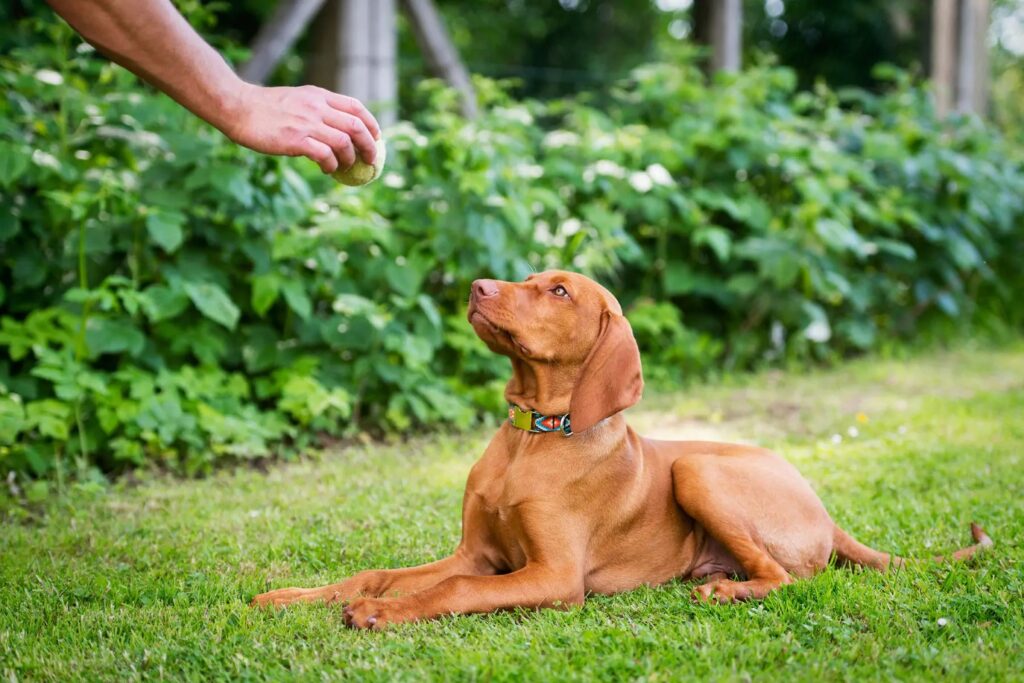Blog
How to Train Your Dog to Stay: A Complete Guide
Teaching your dog to stay is one of the most valuable commands in your training toolkit. Not only does it demonstrate impressive obedience skills, but it can also keep your dog safe in potentially dangerous situations. At StarLuxeTee, we understand that a well-trained dog makes for a happier pet-parent relationship, which is why we’ve created this comprehensive guide to help you master the “stay” command.

Why Teaching “Stay” Is Essential
Before diving into training techniques, let’s understand why the stay command is so important:
- Safety: Prevents your dog from running into dangerous areas like busy streets
- Control: Gives you the ability to manage your dog in social situations
- Discipline: Builds impulse control and patience
- Convenience: Allows you to complete tasks without your dog underfoot
- Foundation: Serves as groundwork for more advanced training
Prerequisites: Before You Begin
The stay command builds on other basic training, so before starting:
- Your dog should already understand the “sit” or “down” command
- You should have established a marker word like “yes” or “good” to signal correct behavior
- Your dog should be comfortable with basic training sessions
- Have plenty of small, high-value treats available
- Choose a training environment with minimal distractions initially
The Step-by-Step Training Process
Phase 1: Introducing the Command
- Start with position: Ask your dog to sit or lie down, whichever position you want them to stay in.
- Add the command: With your dog in position, hold your palm out in front of you (like a “stop” signal) and say “stay” in a clear, firm voice.
- Wait briefly: Start with just 2-3 seconds of staying.
- Release command: Use a consistent word like “okay” or “free” to release your dog from the stay position.
- Reward success: Immediately praise and treat when your dog completes even a very brief stay.
Phase 2: Building Duration
- Gradually increase the time your dog must stay before being released:
- Start with 5 seconds
- Progress to 10 seconds
- Work up to 30 seconds
- Eventually aim for 1-2 minutes
- If your dog breaks the stay, calmly reset and try again with a shorter duration.
- Remember to use your release word every time, even if your dog breaks the stay on their own.
Phase 3: Adding Distance
- With your dog in a stay position, take one step back.
- Return to your dog, then release and reward.
- Gradually increase the distance:
- 2-3 steps
- Half the room
- Full room length
- Out of sight (briefly)
- Always return to your dog before giving the release command in the early stages of training.
Phase 4: Adding Distractions
- Practice the stay command with minor distractions:
- Moving your arms
- Walking in different directions
- Bouncing a ball
- Having another family member walk through the room
- Gradually increase the level of distraction as your dog becomes more reliable.
Troubleshooting Common Challenges
“My dog won’t stay for more than a second”
- Return to even shorter durations and build more gradually
- Ensure your rewards are valuable enough to motivate
- Consider whether the environment is too distracting
- Practice when your dog is slightly tired and more compliant
“My dog gets up when I move away”
- Start with less movement – just shift your weight at first
- Keep initial distances very short – even half a step counts
- Use a longer lead if needed to gently remind them to stay
- Consider practicing with your dog on a mat or bed to create a “place” association
“My dog stays but seems anxious”
- Keep training sessions shorter and more positive
- Make sure you’re not using an intimidating tone
- Build confidence through success – stick with easier levels longer
- End each session on a high note
Advanced Stay Training Tips
Once your dog has mastered the basics, challenge them with:
- Different positions: Practice stay in sit, down, and stand positions
- Different locations: Train in your yard, at parks, near sidewalks
- Longer durations: Work up to 5, 10, or even 15-minute stays
- Greater distances: Practice with you in another room
- Distractions: Practice with other dogs, people, or toys present
Real-Life Applications for the Stay Command
Put your training to practical use in scenarios like:
- Having your dog stay while you answer the door
- Keeping your dog in one spot while you prepare their meal
- Preventing your dog from bolting out of the car before being leashed
- Maintaining control during vet visits
- Creating photo opportunities for the perfect Instagram moment
Keys to Success
Remember these principles throughout your training journey:
- Be consistent: Use the same hand signal and verbal cue each time
- Progress gradually: Don’t increase difficulty too quickly
- End positively: Finish each session with something your dog can succeed at
- Keep sessions short: 5-10 minutes maximum, several times a day
- Stay patient: Some dogs learn more quickly than others
When to Expect Results
Most dogs can learn a basic stay within a few weeks of consistent training. However, a reliable stay with distractions and longer durations typically takes 1-3 months of regular practice. Remember that some breeds may learn faster than others, and individual dogs have their own learning pace.
Celebrating Your Dog’s Progress
Every time your dog masters a new level of difficulty with the stay command, celebrate their achievement! Take photos of their progress, share their success with friends, or give them a special treat. Building positive associations with training helps reinforce good behavior and strengthens your bond.
